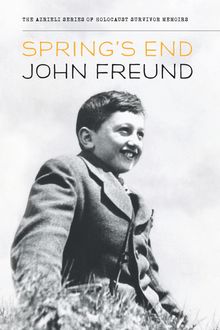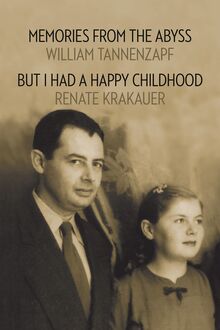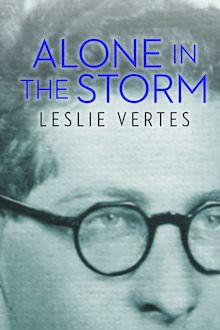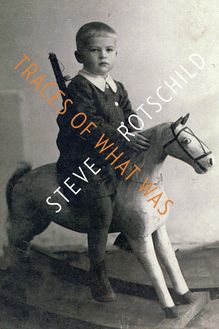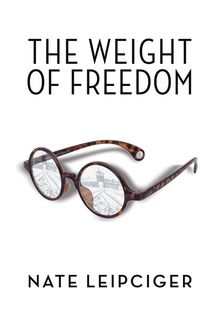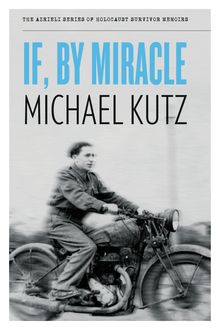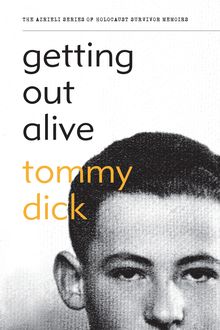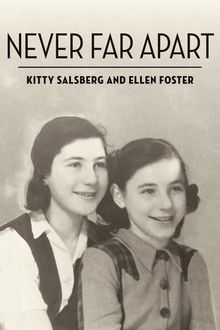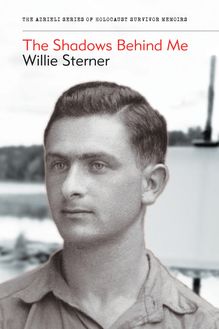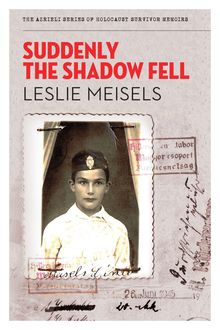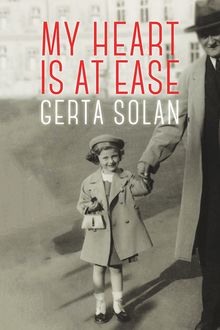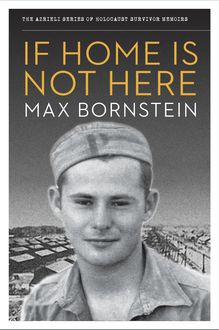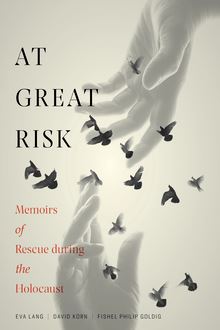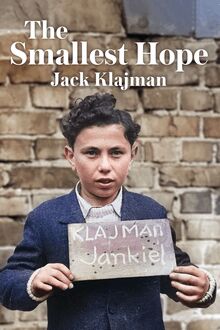The Violin/A Child's Testimony , livre ebook
160
pages
English
Ebooks
2007
Vous pourrez modifier la taille du texte de cet ouvrage
Obtenez un accès à la bibliothèque pour le consulter en ligne En savoir plus
Découvre YouScribe et accède à tout notre catalogue !
Découvre YouScribe et accède à tout notre catalogue !
160
pages
English
Ebooks
2007
Vous pourrez modifier la taille du texte de cet ouvrage
Obtenez un accès à la bibliothèque pour le consulter en ligne En savoir plus
Publié par
Date de parution
01 septembre 2007
Nombre de lectures
2
EAN13
9781897470930
Langue
English
Poids de l'ouvrage
1 Mo
Rachel Milbauer, a vivacious and outgoing music lover, hid silently in an underground bunker in Nazi-occupied Poland for nearly two years. After the war, a recovered violin, case and photos hidden away by Rachel’s beloved Uncle Velvel became cherished symbols of survival and continuity. Saved by inner fortitude, luck and the courage and caring of friends and strangers, Rachel and Adam met and fell in love, and set about building a new life together. Half a century later, a chance remark inspired Rachel to explore her memories. Always at her side, Adam chose to break his long self-imposed silence in the only way he could.
Publié par
Date de parution
01 septembre 2007
EAN13
9781897470930
Langue
English
Poids de l'ouvrage
1 Mo
The Violin & A Child’s Testimony
Rachel and Adam Shtibel
The Azrieli Series of Holocaust Survivor Memoirs
Naomi Azrieli, Publisher
Sara R. Horowitz, Chair
Irving Abella
Michael Brown
Mark Webber
Kalman Weiser
Senior Editor for this volume: Naomi Azrieli
Tamarah Feder, Managing Editor & Program Manager (2005–2008)
Maps by Sir Martin Gilbert
Contents
Series Preface: In their own words...
About the Glossary
Introduction
Maps
Special Acknowledgement
The Violin
Dedication
Acknowledgements
Prologue
Part One: My Life Was Blessed
Chapter 1
Chapter 2
Part Two: War, Survival, Silence
Chapter 3
Chapter 4
Chapter 5
Chapter 6
Chapter 7
Chapter 8
Chapter 9
Chapter 10
Chapter 11
Chapter 12
Chapter 13
Chapter 14
Part Three: Post-war Poland
Chapter 15
Chapter 16
Chapter 17
Chapter 18
Chapter 19
Chapter 20
Chapter 21
Chapter 22
Chapter 23
Chapter 24
Chapter 25
Part Four: Israel
Chapter 26
Chapter 27
Part Five: Canada
Chapter 28
Chapter 29
Chapter 30
Chapter 31
Epilogue
A Child’s Testimony
Editor’s Note
A Child’s Testimony
Poems
Glossary
Photographs
Copyright
About the Azrieli Foundation
Also Available
Series Preface: In their own words...
The Azrieli Foundation – York University Holocaust Survivor Mem oirs Publishing Program (Canada) was established to preserve and share the written memoirs of those who survived the twentieth century Nazi genocide of the Jews of Europe and who later made their way to Canada. The Program is guided by the conviction that each survivor of the Holocaust has a remarkable story to tell, and that such stories have an important role in education about tolerance and diversity.
Millions of individual stories are lost to us forever. The murdered Jews of Europe, of course, did not leave behind memoirs of their final days. By preserving the stories that survivors have written, and making them accessible to a broad public, the Program aims to sustain the memory of all those who perished at the hands of hatred, abetted by indifference and apathy. The personal accounts of those who survived against all odds are as different as the people who wrote them, but all demonstrate the courage, strength, wit and luck that it took to face and outlive terrible adversity. More than half a century later, the diversity of stories allows readers to put a face on what was lost, and to grasp the enormity of what happened to six million Jews – one story at a time. The memoirs are also moving tributes to people – strangers and friends – who risked their lives to help others, and who, through acts of kindness and decency in the darkest of moments, frequently helped the persecuted maintain faith in humanity and courage to endure. The accounts of how these survivors went on to build new lives in Canada after the war offers inspiration to all, as does their desire to share their experiences so that new generations can learn from them.
The Program seeks to collect, archive, edit and publish these distinctive historical records from fellow Canadians, and make them easily and freely accessible through Canadian libraries, Holocaust memorial organizations and online at The Azrieli Foundation web-site. The York University Centre for Jewish Studies has provided scholarly assistance and guidance in the editing and preparation of these memoirs for publication. The manuscripts as originally submitted are preserved in the Clara Thomas Archives and Special Collections at York University, and are available for review by interested scholars. These memoirs are published under the imprint The Azrieli Series of Holocaust Survivor Memoirs.
•
The Azrieli Foundation – York University Holocaust Survivor Memoirs Publishing Program gratefully acknowledges the many people who assisted in the preparation of this series for publication. Special thanks go to Jody Spiegel, Executive Coordinator of the Azrieli Foundation. For their invaluable contributions in editing, fact-checking and proofreading the manuscripts, the Program is grateful to Todd Biderman, Helen Binik, Tali Boritz, Mark Celinscak, Mark Clamen, Jordana DeBloeme, Andrea Geddes-Poole, Valerie Hébert, Joe Hodes, Tomaz Jardim, Irena Kohn, Tatjana Lichtenstein, Carson Phillips, Randall Schnoor, Tatyana Shestakov, and Mia Spiro. For their help and support in numerous ways, the Program would like to thank Susan Alper, Mary Arvanitakis, Howard Aster, Miriam Beckerman, François Blanc, Sheila Fischman, Esther Goldberg, Agripino Monteiro, Stan Morantz (Andora Graphics), Ariel Pulver, Michael Quddus, Henia Reinhartz, Nochem Reinhartz, Mark Veldhoven and Don Winkler.
About the Glossary
The following memoir contains a number of terms, concepts and historical references that may be unfamiliar to the reader. For information on major organizations; significant historical events and people; geographical locations; religious and cultural terms; and foreign-language words and expressions that will help give context and background to the events described in the text, please see the Glossary .
Introduction
When Rachel and Adam Shtibel met in 1955 in Wrocław, Poland, they felt an immediate connection. As child survivors of the Nazi Holocaust, they understood each other’s experiences and comforted one another through the occasional moments of remembered pain and fear. The strength of their bond and commitment has underpinned a long-lasting friendship, love affair and marriage. During more than fifty years together, they have twice emigrated to new countries, learned new languages, built successful careers, had children and grandchildren, made friends and enjoyed travel. They pride themselves on their open communication and mutual respect.
Yet, when the couple was approached in 1996 by the Shoah Foundation for Visual History and Education to give videotaped testimony regarding their experiences during World War II , conflicting emotions were brought to the surface and arguments erupted between them. 1 As young children during the Holocaust, Rachel and Adam endured harrowing experiences of deprivation, fear and suffering as well as years of enforced silence that played a critical role in their very survival. In the half century between the end of the war and the invitation to give testimony, neither Rachel nor Adam wished to revisit their experiences except in rare, quiet conversations with their closest family members.
For Rachel, the call to tell her story was welcomed as a chance to explore her memories. An articulate, aware and energetic woman, she was ready to break with the silence imposed on her as a child. Adam, for his part, saw no reason to dig up painful memories after so many years of stability and success. Quiet and strong, he was nonetheless afraid of the pain that would emerge, and worried that depression might follow in its wake. After many tearful discussions, Rachel prevailed and the two were interviewed together in 1996.
The experience was a turning point for Rachel. In 1998, contrary to Adam’s advice and against the backdrop of his worry, Rachel sat down to write her memoirs. It was the start of a journey of self-discovery and commemoration resulting in the beautifully written and moving memoir, The Violin , presented in the first section of this volume.
Adam supported his wife throughout the year she spent writing her book but, to this day, he is not sure she did the right thing. Watching her relive traumatic episodes, helping her cope with nightmares and stress-related health problems, he focused resolutely on his post-war life and still remains uncomfortable talking about his childhood. He has never been able to write anything down.
While writing The Violin , however, Rachel convinced Adam to locate the transcript of a testimony he gave in 1948 to the Central Jewish Historical Commission in Warsaw. From 1945 to 1948, this organization collected and preserved more than 6,000 testimonies from Holocaust survivors, most notably from children and teenagers. It was one of a handful of organizations dedicated to collecting eyewitness accounts soon after the war’s end, and one of the very few to make a concerted effort to find children and take down their testimony. Adam discovered that his testimony is now housed in the archives of the Jewish Historical Institute in Warsaw, along with the accounts of thousands of other survivors. Rachel and Adam obtained a copy. Still uncomfortable with his memories, Adam was at first unable even to read the testimony as written in Polish. Rachel eventually read it, translating aloud into English as she went. This was the only way in which Adam could absorb the words he had spoken in 1948. Adam’s story, entitled A Child’s Testimony , is presented in the second section of this volume, in a translation prepared by Henia and Nochem Reinhartz in 2007. 2
•
When World War II broke out, Rachel Chai Milbauer was four years old and living in the village of Turka, near Kołomyja in Eastern Galicia, Poland. Adam Shtibel (then Abram Sztybel) was ten years old and living in the town of Komarów, not far from Zamość, approximately 100 kilometres southeast of Lublin. Their experiences as Jewish children witnessing and surviving the horrors of the German occupation of Poland were very different. Yet, both their stories unfold against the backdrop of Hitler’s racially motivated and murderous war aims.
When the Nazis marched into Poland in September 1939, they were guided by the goal of creating a new racial order in which Jews and other “inferior races” had no place at all, or were there only to serve “racially superior” Germans. 3 The
